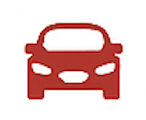Exploring the Unique and Evolving Car Culture of Colombia
The Growth of Automotive Ownership and Infrastructure
Car ownership in Colombia has grown significantly over the past few decades, particularly in urban centers such as Bogotá, Medellín, and Cali. As of the early 2020s, over 17 million motor vehicles were registered nationwide, with approximately 8 million of these being private cars. This rise reflects both Colombia's expanding middle class and increased access to credit for vehicle purchases.
Alongside growing car ownership, the government has invested in expanding road infrastructure. Major projects like the Fourth Generation (4G) roads initiative aim to modernize over 8,000 kilometers of highways, improving access between major cities and ports. However, urban congestion remains a challenge, especially in Bogotá, which is infamous for its traffic jams despite having one of the highest rates of car ownership per capita in South America.
Bogotá's Pico y Placa and Traffic Management Strategies
To manage traffic congestion, Bogotá implemented a traffic control policy known as 'Pico y Placa.' This policy restricts vehicles from circulating on certain days based on the last digit of their license plate. Originally introduced in 1998, the system has evolved to include both morning and evening rush hours and is now supplemented by a similar strategy in other Colombian cities.
Although controversial, Pico y Placa has had mixed success. Some residents have purchased a second vehicle with a different plate number to circumvent the restrictions, inadvertently increasing the total number of cars on the road. Meanwhile, public opinion on the measure varies, with some praising its role in reducing peak-hour congestion and others criticizing its unintended consequences.
The Rise of Car Customization and Tuning Subcultures
Car tuning and customization have become increasingly popular in Colombia, especially among younger drivers and enthusiasts. Cities like Medellín and Cali have vibrant scenes where modified vehicles, often featuring elaborate paint jobs, LED lighting, sound systems, and performance upgrades, are showcased during weekend gatherings and events.
One of the most visible aspects of this subculture is the 'car audio' scene, where competitions are held to judge vehicles based on the quality and volume of their sound systems. These gatherings, sometimes referred to as 'picós' in coastal cities, are a fusion of automotive enthusiasm and Colombian musical culture, particularly genres like reggaetón and champeta.
This tuning culture is often informal and exists in a legal gray area. While customization itself is not illegal, certain modifications can lead to fines if they affect safety or violate emissions regulations. Enthusiasts often operate within a tight-knit community that shares technical advice, parts, and event news through social media platforms.
Classic Car Collectors and Preservation of Automotive Heritage
Colombia also has a notable population of classic car collectors and restorers, particularly focused on models from the 1940s through the 1970s. Brands like Renault, Dodge, Ford, and Chevrolet dominate the classic car scene, with many collectors investing significant time and money to preserve or restore vintage vehicles to showroom condition.
The annual 'Feria de las 2 Ruedas' in Medellín often includes classic car exhibits alongside motorcycle showcases. Bogotá also hosts classic car parades, with participation from collectors' clubs such as the Club Colombiano de Automóviles Antiguos y Clásicos. These events highlight the country's appreciation for historical vehicles and serve as educational opportunities for younger generations.
Notably, many of the vintage vehicles seen on Colombian roads today were assembled locally during the 20th century. For example, Sofasa (Sociedad de Fabricación de Automotores) began producing Renault models in the country in 1970, and many of these early vehicles remain part of Colombia's automotive heritage.
The Importance of Motorcycles and Informal Transport
While cars are central to Colombian car culture, motorcycles play an equally important role in daily transportation. As of 2024, there were more motorcycles than cars registered in Colombia, especially in cities like Cúcuta and Sincelejo, where motorcycles are essential due to narrower roads and lower income levels. Affordable, fuel-efficient, and easy to maintain, motorcycles provide mobility to millions who might not afford a car.
In addition to private vehicles, informal transportation options such as 'mototaxis' and shared ride vans (known as 'busetas' or 'colectivos') form an integral part of urban and rural commuting. These services operate in the gaps left by formal public transit and are often seen as both necessary and controversial due to regulatory challenges and safety concerns.
Future of Car Culture: Electric Vehicles and Urban Planning
Colombia is emerging as a regional leader in the adoption of electric vehicles (EVs), thanks to government incentives and tax exemptions. The country has seen a steady increase in EV sales, particularly in Bogotá, where electric taxis and buses are being introduced to reduce emissions. The government aims to have over 600,000 electric vehicles on the road by 2030.
Urban planners in cities like Medellín are also embracing sustainable mobility initiatives, including car-free zones, bike lanes, and pedestrian-friendly development. These policies reflect a growing awareness of the environmental impact of traditional car culture and a desire to balance private vehicle ownership with cleaner alternatives.
Despite these trends, challenges remain in ensuring that infrastructure and charging networks can keep pace with EV adoption. Nonetheless, Colombia's embrace of electric mobility suggests that the car culture of the future may look quite different from its combustion-engine past.
